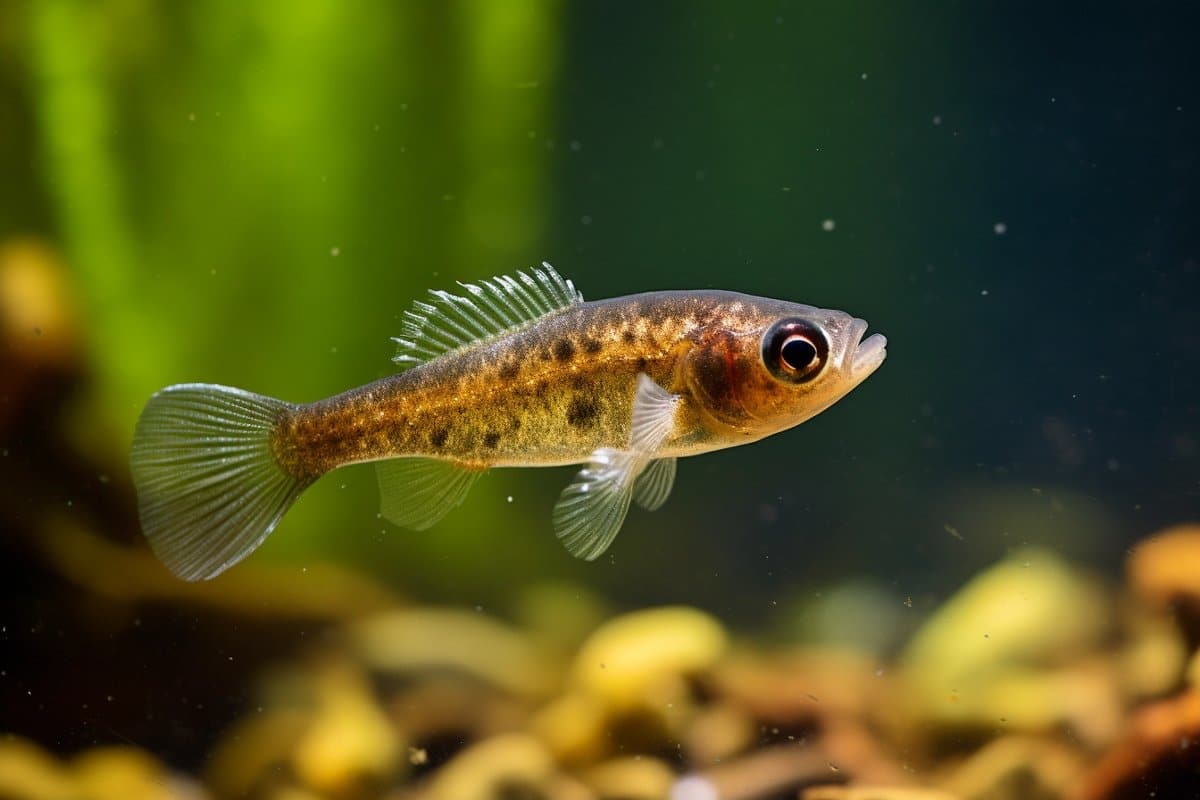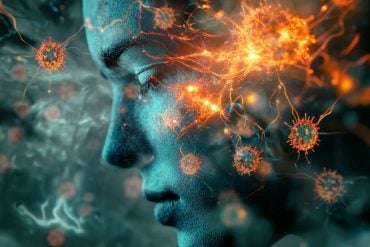Summary: A new study provides significant insights into how animals, specifically three-spined stickleback fish, make decisions under competing demands. The study explored the fish’s behaviors during the breeding season, where males must simultaneously defend territory, court females, and care for offspring.
By exposing male sticklebacks to various stimuli and analyzing their behavioral responses and brain gene expression, the researchers discovered a complex interaction between territorial defense and courtship, with some prioritizing defense.
This research not only sheds light on animal decision-making processes but also suggests ancient mechanisms driving complex decision-making across many taxa.
Key Facts:
- The study used three-spined stickleback fish to investigate decision-making under trade-offs between courtship and territorial defense.
- Behavioral observations and gene expression analysis revealed that males generally prioritize territorial defense over courtship.
- The findings suggest the involvement of ancient mechanisms in complex decision-making, relevant across various animal taxa.
Source: University of Illinois
How do animals make decisions when faced with competing demands, and how have decision making processes evolved over time?
In a recent publication in Biology Letters, Tina Barbasch, a postdoctoral researcher at the Carl R. Woese Institute for Genomic Biology, and Alison Bell (GNDP), a professor in the Department of Ecology, Evolution and Behavior, explored these questions using three-spined stickleback fish (Gasterosteus aculeatus).

Whether you are in school, working, raising children, managing a social life, or just trying to relax for a moment, managing multiple responsibilities at once can quickly become overwhelming. You may find yourself wondering how much simpler life would be if you were a fish floating along a river or a hawk soaring through the sky.
Yet, animals also face the burdens of multitasking, whether it be searching for their next meal while avoiding becoming someone else’s next meal or attracting a mate while defending their territory.
“During my PhD, I studied parental care in clownfish, and how they decide how much care to provide for their offspring,” says Barbasch.
“This requires the integration of many sources of social and environmental information. Recently, I have become interested in understanding the mechanisms underlying how animals make decisions and integrate different sources of information.”
Despite the importance of decision making for an animal’s fitness, the mechanisms that shape decision-making are not well understood. Stickleback are a powerful model for investigating these questions because of their complex life history and reproductive behavior.
During the breeding season, male sticklebacks establish territories to build nests to attract females. Males must simultaneously defend their territories from other males, court females that enter their territory with performative swimming motions, called ‘zig-zags’, and ultimately provide care for offspring if they can successfully court a female.
“This study was inspired by an experiment where we looked at brain gene expression in male three-spined stickleback during parental care or when defending their territory,” explained Bell.
“We found that the same genes were involved in both experiments, but in opposite directions – genes turned on in one condition were turned off in the other. This idea that the brain might be using the same molecular machinery, but in opposite ways, could have major implications for the evolution of decision making.”
To explore the underlying molecular mechanisms of decision making, Barbasch exposed male stickleback to one of three stimuli: a female stickleback (courtship treatment); another male stickleback (territorial intruder treatment), or both a male and female stickleback (trade-off treatment).
Some male stickleback were left alone as a control. Aggressive behaviors (biting) and courtship behaviors (zig-zags) were quantified, and then the brains of the male stickleback were dissected to look at gene expression using RNA sequencing.
Barbasch found that, when faced with a trade-off, males generally prioritized territorial defense over courtship. There was also substantial variation across males in how they responded, suggesting that there might be different strategies that males employ when faced with a trade-off.
Furthermore, the gene expression results identified groups of genes that were differentially expressed across each of the experimental treatments relative to a control. Of particular interest are the genes that are only present in the trade-off treatment, because they suggest that males have a unique molecular response when faced with conflicting demands.
“We performed gene ontology analysis on these ‘trade-off genes’ to look into what the identity and function of these genes might be”, describes Barbasch. “Preliminary results suggest the ‘trade-off’ genes may be related to the dopamine response pathway, which modulates reward and motivation in the brain, or neurogenesis, which is important for cognition.”
Ultimately, these findings highlight the importance of exploring the molecular basis of animal behavior, as Bell outlines. “Animals are living really complicated lives, across many taxa. This suggests that the mechanisms that are driving complex decision-making are probably really ancient and animals have been managing complex decisions for a long time”.
Barbasch’s study also sets the foundation for a wide range of exciting follow-up studies. She has already started to explore the behavioral and molecular responses by stickleback to other trade-offs including those involving predation risk, foraging, and parental care.
She also plans on expanding her molecular toolkit by quantifying gene expression in finer detail using single-cell RNA sequencing and weighted gene co-expression network analysis, which helps capture gene function by identifying networks of genes with related patterns of expression.
So, the next time you notice an animal doing something, think a bit deeper about their day-to-day life, and how they are finding a way to manage all their responsibilities.
About this decision-making and neuroscience research news
Author: Nicholas Vasi
Source: University of Illinois
Contact: Nicholas Vasi – University of Illinois
Image: The image is credited to Neuroscience News
Original Research: Open access.
“A distinct neurogenomic response to a trade-off between social challenge and opportunity in male sticklebacks (Gasterosteus aculeatus)” by Alison Bell et al. Biology Letters
Abstract
A distinct neurogenomic response to a trade-off between social challenge and opportunity in male sticklebacks (Gasterosteus aculeatus)
Animals frequently make adaptive decisions about what to prioritize when faced with multiple, competing demands simultaneously.
However, the proximate mechanisms of decision-making in the face of competing demands are not well understood.
We explored this question using brain transcriptomics in a classic model system: threespined sticklebacks, where males face conflict between courtship and territorial defence. We characterized the behaviour and brain gene expression profiles of males confronted by a trade-off between courtship and territorial defence by comparing them to males not confronted by this trade-off.
When faced with the trade-off, males behaviourally prioritized defence over courtship, and this decision was reflected in their brain gene expression profiles. A distinct set of genes and biological processes was recruited in the brain when males faced a trade-off and these responses were largely non-overlapping across two brain regions.
Combined, these results raise new questions about the interplay between the neural and molecular mechanisms involved in decision-making.






